An Optotune focus-tunable liquid lens permits the user to re-focus a glass lens using only an electrical signal. There is no need to mechanically move anything to refocus the lens.
Optotune’s shape-changing lenses are positioned within the optical path and are filled with an optical fluid that uses an electromagnetic actuator to exert pressure on the fluid’s container. This pressure changes the focus plane by changing the curvature of the lens, for example from concave to convex, in about 4ms.
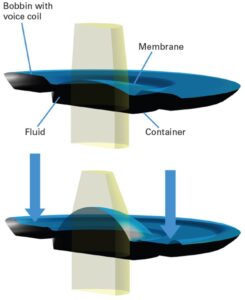
Many vision inspection and vision-guided robotics systems must be in-focus at multiple working distances. When the distance between target working distance values is larger than the depth-of-field range of the glass lens by itself, a liquid lens is added to refocus the glass lens on command. The liquid lens does not alter or extend the depth-of-field of the glass lens, but does provide precise working distance adjustment, with the existing depth-of-field. Depending on the glass lens type and the liquid lens configuration, remote electronic focusing is possible from 100mm or less to infinity.
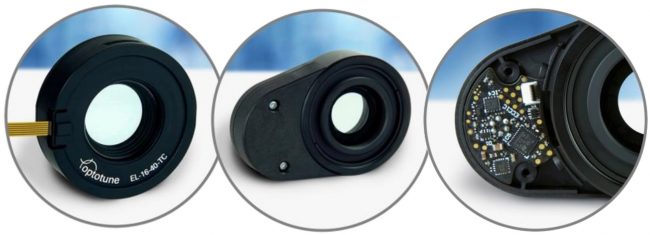
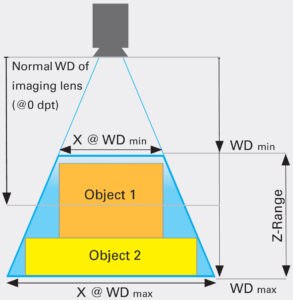
Liquid lenses, when used with a telecentric or high magnification glass lens system, must be built into the glass lens itself.
With telecentric and high magnification lenses, the best position for the integration of a liquid lens is right behind the aperture stop, which optimizes for larger z-ranges and small magnification changes. For example, a z-range of 20 mm is achievable at 1X and 10 mm is achievable at 2X magnification, whereas the magnification change over that entire range is in the order of 5%. As both the working distance and magnification change linearly with optical power of the tunable lens, a simple two-point calibration can be performed to use the system for accurate measurements.
A liquid lens is integrated into a growing number of high magnification lens systems to improve on the limited depth-of-field that goes with high magnification.

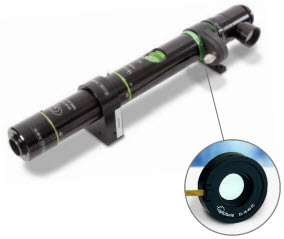
Optotune’s focus tunable lenses are controlled by electrical current. Controllers are available to provide the necessary current and offer advanced software control and communication options.
Controllers range from compact USB stick drivers that plug into a PC, to external liquid lens driver solutions, to a built-in controller that mounts inside the liquid lens’s housing.
The available liquid lens controllers offer (model specific):

To further reduce the liquid lens focus time, an external sensor, such as a laser range finder, may be used to establish the working distance and feed this information directly to the lens controller so that it may calculate the specific electrical current value needed for refocusing the liquid lens in a matter of milliseconds.
Placing the lens between camera and C-mount lens is like adding a spacer to the rear of the lens. This makes more sense for lenses with focal lengths of 35 mm or more and offers good macro possibilities. While this configuration usually provides less optical leverage (smaller WD ranges) than the front lens configuration, it can offer better resolution and reproducibility of the focus plane.
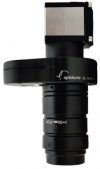
Vision systems of 8 mm to 50 mm focal length can be equipped with a tunable lens in the front, typically mounted to the filter thread of the lens. In this configuration, it is possible to focus from infinity down to about 100 mm (tunable lens at 10 diopters) or less.
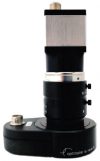
R.J. Wilson, Inc. works with OEMs, system integrators and end users to implement liquid lens technology. The selection of a liquid lens is best done starting with a conversation. Please contact R.J. Wilson, Inc. at [email protected] or call us at 781-335-5500 to have a discussion of how a liquid lens may improve your imaging process.